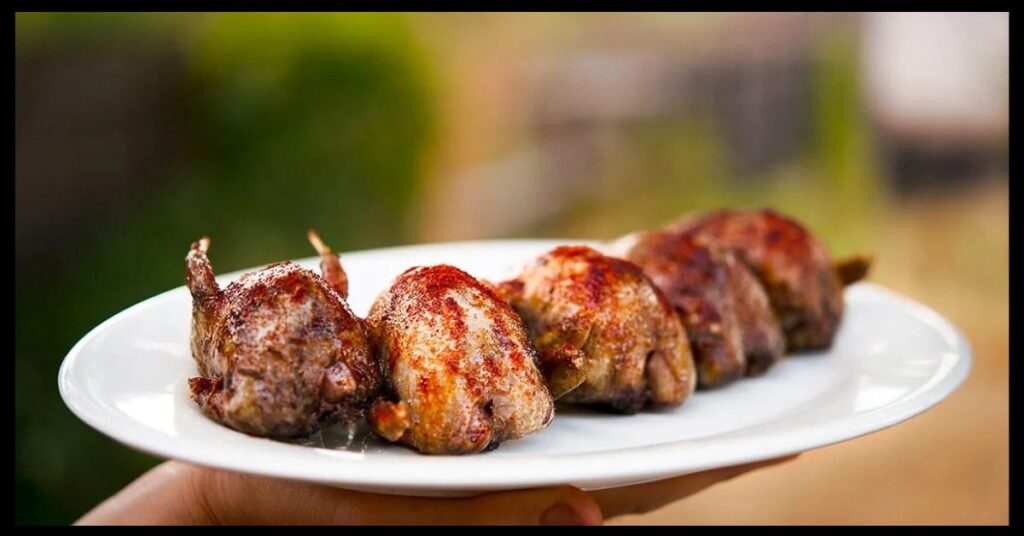Dove meat is a delicacy enjoyed by many game meat enthusiasts. Known for its tender texture and mild, rich flavor, dove is commonly harvested during hunting seasons and prepared in a variety of traditional and modern recipes. This article provides a comprehensive overview of dove recipes, including preparation techniques, cooking methods, and popular dishes, all while maintaining food safety and ethical considerations.
Table of Contents
ToggleUnderstanding Dove Meat
Dove, particularly the mourning dove, is one of the most hunted game birds in the United States. According to the U.S. Fish and Wildlife Service, over 10 million mourning doves are harvested annually by licensed hunters during designated seasons. Their meat is lean and protein-rich, with a dark red color similar to duck or squab.
Nutritional Value of Dove Meat
Dove meat is considered a healthy source of protein, offering essential nutrients like iron, zinc, and B vitamins. A single dove breast typically contains:
- Calories: 60–70
- Protein: 11–13 grams
- Fat: 1–2 grams
- Carbohydrates: 0 grams
Due to its low fat content, dove meat is best cooked quickly or with added fats to prevent it from drying out.
How to Prepare Dove Meat
Proper preparation is essential for getting the most out of dove recipes. Whether freshly hunted or store-bought (in areas where available), dove must be cleaned and handled safely.
Cleaning and Dressing
- Plucking: Feather removal can be done by hand or by skinning the bird entirely.
- Eviscerating: Remove internal organs promptly to maintain freshness.
- Aging: Some hunters age the meat in a refrigerator for 1–2 days to enhance tenderness.
- Storage: Store cleaned dove breasts in airtight containers and refrigerate or freeze promptly.
Marinating for Flavor
Dove meat can benefit from marination to add moisture and enhance flavor. A simple marinade of olive oil, garlic, lemon juice, and herbs like rosemary or thyme works well. Let the meat marinate for 2–6 hours before cooking.
Popular Dove Recipes
There are several popular ways to cook dove meat, each bringing out unique flavors and textures.
1. Grilled Bacon-Wrapped Dove
Ingredients:
- 10 dove breasts
- 10 slices of bacon
- Jalapeño slices (optional)
- Cream cheese (optional)
- Toothpicks
Instructions:
- Preheat grill to medium-high heat.
- Optionally stuff each dove breast with a slice of jalapeño and a small spoon of cream cheese.
- Wrap each breast with a slice of bacon and secure with a toothpick.
- Grill for 6–8 minutes, turning occasionally, until bacon is crisp and meat is cooked.
2. Dove Poppers
A favorite at game cookouts, dove poppers are bite-sized and full of flavor.
Ingredients:
- Dove breasts
- Bell peppers
- Onions
- Bacon
- Skewers
Instructions:
- Cut dove breasts and vegetables into equal-sized chunks.
- Alternate dove, peppers, and onions on skewers.
- Wrap each piece with a small bacon strip.
- Grill or broil for 10–12 minutes, turning for even cooking.
3. Dove Stew
A heartier option, perfect for cooler months.
Ingredients:
- 10–12 dove breasts
- 2 tablespoons oil or butter
- 1 onion, chopped
- 2 carrots, chopped
- 2 potatoes, diced
- 2 cups chicken or game stock
- Salt, pepper, bay leaf
Instructions:
- Brown dove breasts in oil, then set aside.
- In the same pot, sauté onion, carrots, and potatoes.
- Return dove to the pot, add stock, and seasonings.
- Simmer for 45 minutes or until vegetables are tender.
4. Dove Tacos
Bringing a modern twist to traditional game meat.
Ingredients:
- Cooked dove breasts (grilled or pan-seared)
- Corn or flour tortillas
- Avocado, sliced
- Cabbage slaw
- Lime wedges
- Hot sauce (optional)
Instructions:
- Shred or slice cooked dove meat.
- Warm tortillas and fill with meat, avocado, and slaw.
- Add lime juice and hot sauce to taste.
Cooking Tips for the Best Results
- Avoid Overcooking: Dove breasts are small and can become tough if overcooked. Aim for medium-rare to medium doneness.
- Use Moist Cooking Methods: Braising or adding fat (like bacon) helps retain moisture.
- Pair with Complementary Flavors: Ingredients like mushrooms, garlic, peppers, and herbs complement dove meat well.
- Ethical Sourcing: Always hunt legally and follow local regulations. Ethical preparation respects wildlife and ensures food safety.
Safety and Food Handling
Handling wild game requires adherence to basic food safety principles:
- Wear gloves while cleaning to prevent cross-contamination.
- Cook to a safe internal temperature of at least 165°F (74°C).
- Freeze any unused meat within two days to preserve freshness.
- Inspect meat for any signs of spoilage before use.
According to the USDA, game meat, like dove, should be treated with the same precautions as poultry to prevent foodborne illnesses.
Conclusion
Dove meat offers a delicious and healthy option for adventurous cooks and game meat lovers. Whether grilled, stewed, or added to tacos, dove recipes provide a unique culinary experience rooted in tradition and sustainability. With the right preparation and seasoning, dove can be a highlight of any wild game meal.
FAQs
Q: Can dove meat be frozen?
Yes. Properly cleaned and vacuum-sealed dove breasts can be frozen for up to 6–9 months.
Q: Is it safe to eat dove medium-rare?
Yes, as long as it’s cooked to an internal temperature of 165°F. Slight pinkness is acceptable if properly handled.
Q: Where can you get dove meat if you don’t hunt?
In some regions, game farms or specialty butchers may sell farm-raised dove meat. Always ensure it comes from a licensed provider.







